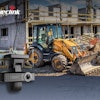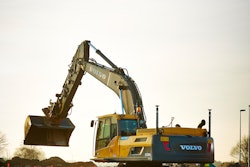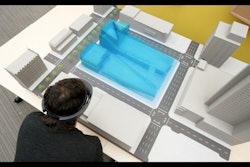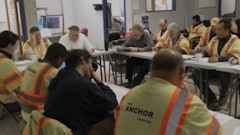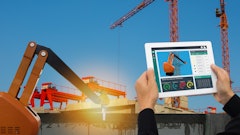Over the last couple of issues, we examined the past by highlighting 50 years of construction equipment history (see August 2015), and the present by featuring the 50 products selected by our readers as today’s most intriguing new offerings (ForConstructionPros.com/12100276). This month, we look to the future by focusing attention on several technologies that hold the potential to reshape the industry. You’ll find our exclusive coverage starting with a pull-out poster following page 18. (For the interactive version, visit ForConstructionPros.com/Transformation.)
Some of you may initially dismiss advancements such as augmented reality (e.g., Google Glass) as just another unnecessary, frivolous gadget targeted to the teen set, or autonomous vehicles/equipment as the latest “whiz bang” idea — intriguing but impractical and too costly for the average construction site. Yet, advanced technologies such as these could have a role on the jobsite under the right circumstances, and are already beginning to redefine how certain projects are completed.
Consider how far technology such as building information modeling (BIM) has come in helping contractors to cut project timelines, avoid errors and cut overall project costs, while improving communication between project stakeholders. Or how GPS-based grade control has enabled earthmovers to get to grade more quickly and minimize rework by enabling automated control of the blade and the use of 3D design plans situated onboard the machine. Then there’s telematics technology, which is facilitating communication between equipment and the back office, allowing more efficient management of assets, production and personnel.
Of course, investment in any technology requires a careful, thoughtful approach to assess the value and potential ROI. It also calls for a plan to introduce the technology in a manner that is most likely to generate positive results. This includes ensuring those impacted are kept in the loop early in the selection process, and that they will be properly trained on its use prior to full implementation.
Familiarizing yourself with the types of technological advancements coming down the pike and the potential applications in your business is an important first step. It will help you to see the long-term prospects and enable you to make more knowledgeable decisions about the practicality and profit-making/enhancing potential for your company.
Much of the technology we’re exploring in this issue is either in its infancy in terms of adoption or still in the early stages of development or production. But all offer solid potential to change how you approach your operations. As you page through our exclusive “Look to the Future,” I hope you will keep an open mind and view this as a chance to educate yourself on what’s possible and perhaps probable for your sites. While not all of the technologies highlighted will have a place on every project you manage, perhaps a portion may wind up on your sites in future, delivering quantifiable benefits to your business and redefining how you approach construction processes.



